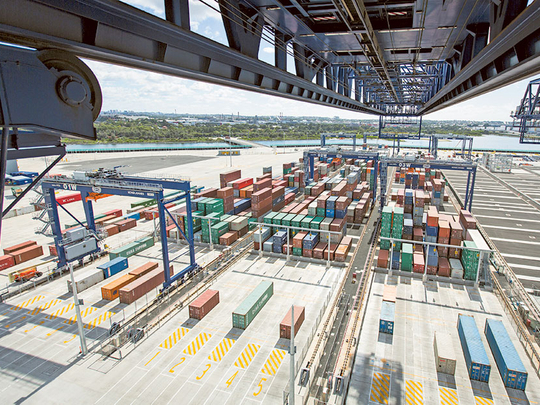
Dubai: Is yours one of the five jobs ripe for automation?
Automation is transforming the jobs we do. Any dangerous or repetitive activity is a candidate for automation — even if it is complex and required years of training for human operators. We looked at five areas where automation is already starting to make a difference. Some of them may surprise you.
Port container handlers/Dockers
The modern container is nearly 60 years old and completely transformed the shipping industry. Now automation promises to replace human dockers entirely.
Port Botany in Sydney Australia has a completely automated container terminal. It uses 45 automated straddles to move containers between trucks and ships. They use a radar-based navigation system to move containers taken from ships onto stacks or trucks where they are driven away.
The only humans drive the trucks taking the containers away and operate the cranes unloading the containers off the ships. The rest of the process is fully automated. Safety is a key benefit and there have been no accidents since the system was started in April 2015.
Lorry drivers/Truckers
While humans still drive the trucks away in the port, they too could be automated in the future. In the Alberta tar sands, gigantic 400-ton trucks are a key part of oil extraction. Canadian company Suncor Energy has been testing GPS-assisted self-driving trucks to see if they could completely do away with human drivers at its oilfields.
It has bought 175 driverless trucks and reportedly plans to replace its entire fleet with self-driving trucks by the end of the decade. It is not alone, automated vehicles are already in use in mining operations in Australia and advocates say they can improve safety and efficiency.
Journalists
Automation is also making its way into areas that have traditionally been thought of as ‘knowledge industries’. Look at journalism, for example. Associated Press signed a deal last year (2014) with Automated Insights to create automated earning reports with its Wordsmith platform.
The tool extracts key data from financial data and creates an accurate (but dry) story immediately. AP reportedly publishes 3,000 robot-written stories every quarter and expects this number to grow. When the automated platform was first deployed, the stories were reviewed by humans who reported mistakes to help tune the platform.
After three months, the stories went out without human intervention. The robot is attuned to the AP style guide, works round-the-clock, makes fewer mistakes and never gets bored doing interminable financial reports. You can see why editors would like them!
Doctors
Mistakes in earnings reports are one thing, but mistakes in medicine have a much bigger impact. So can automated medics help improve care?
One thing is for sure, the ageing world population is already putting existing health care systems under strain, so new approaches are desperately needed. In 2012, entrepreneur Vinod Khosla told a conference full of medics that machines will replace 80 per cent of doctors.
Although it seems unlikely you will make an appointment for a consultation with a robot general practitioner, automation is already helping medical professionals in specialist areas such as radiology and pathology. For example, automated image processing can detect abnormalities in cells or scans and support medical staff in their diagnoses, allowing them to be quicker and more accurate.
Lawyers
Once one of the slowest sectors to adopt technology, now automation is even threatening to turn the legal profession on its head. One of the first automated technologies to make an impact in law is in e-discovery, which is where previous cases are assessed for relevance for a court case.
Traditionally this work would have been carried out by lower level lawyers reading the documents and making an assessment based on its content. Now this work can be carried out entirely by robots who are able to accurately determine the relevance of the documents.
It doesn’t stop there either — automated systems could help predict how likely you are to win a patent dispute or help predict judicial decisions. All of these are likely to help drive down the cost of legal services allowing more people to resolve their disputes and access justice more easily.
The writer is Senior Vice-President — Middle East, North Africa and Turkey, Orange Business Services.




